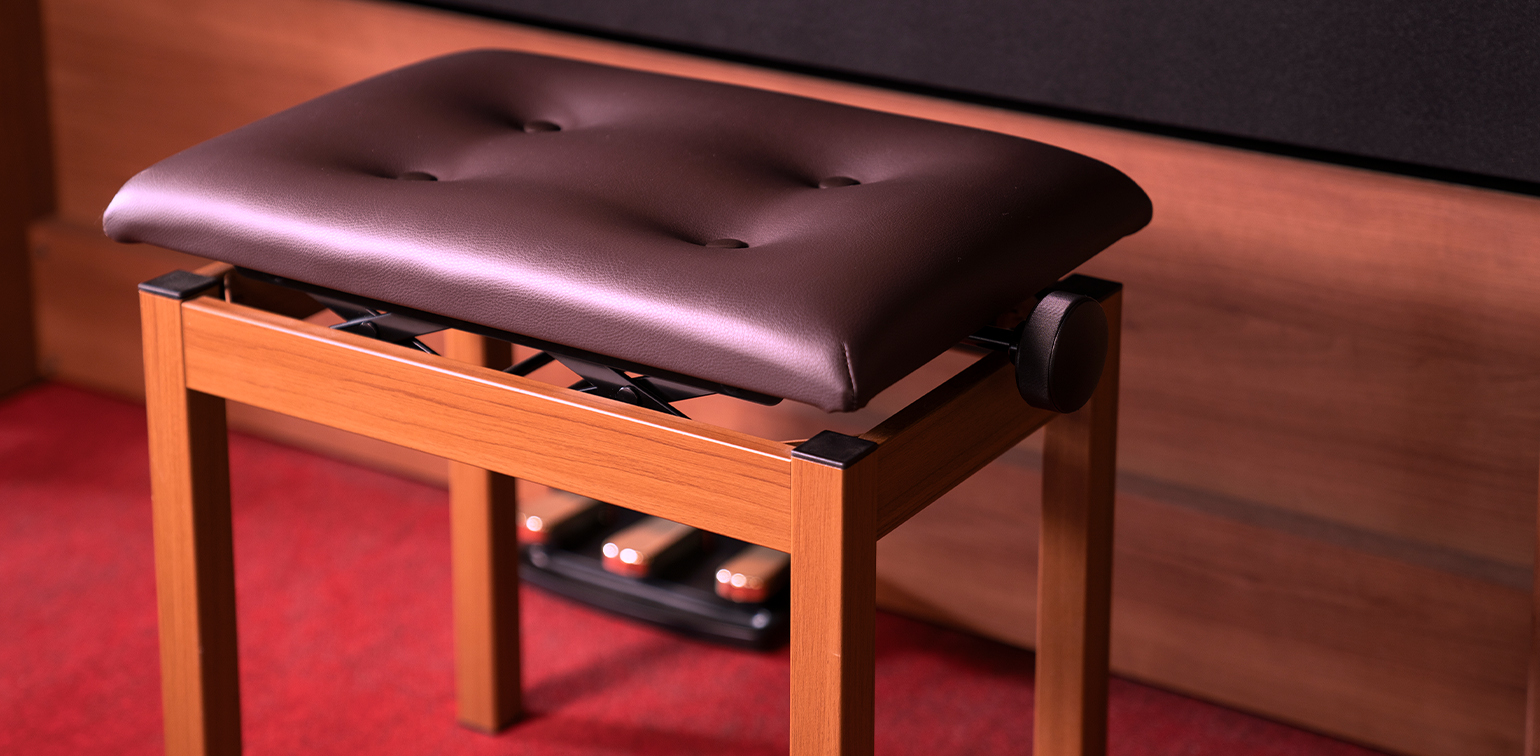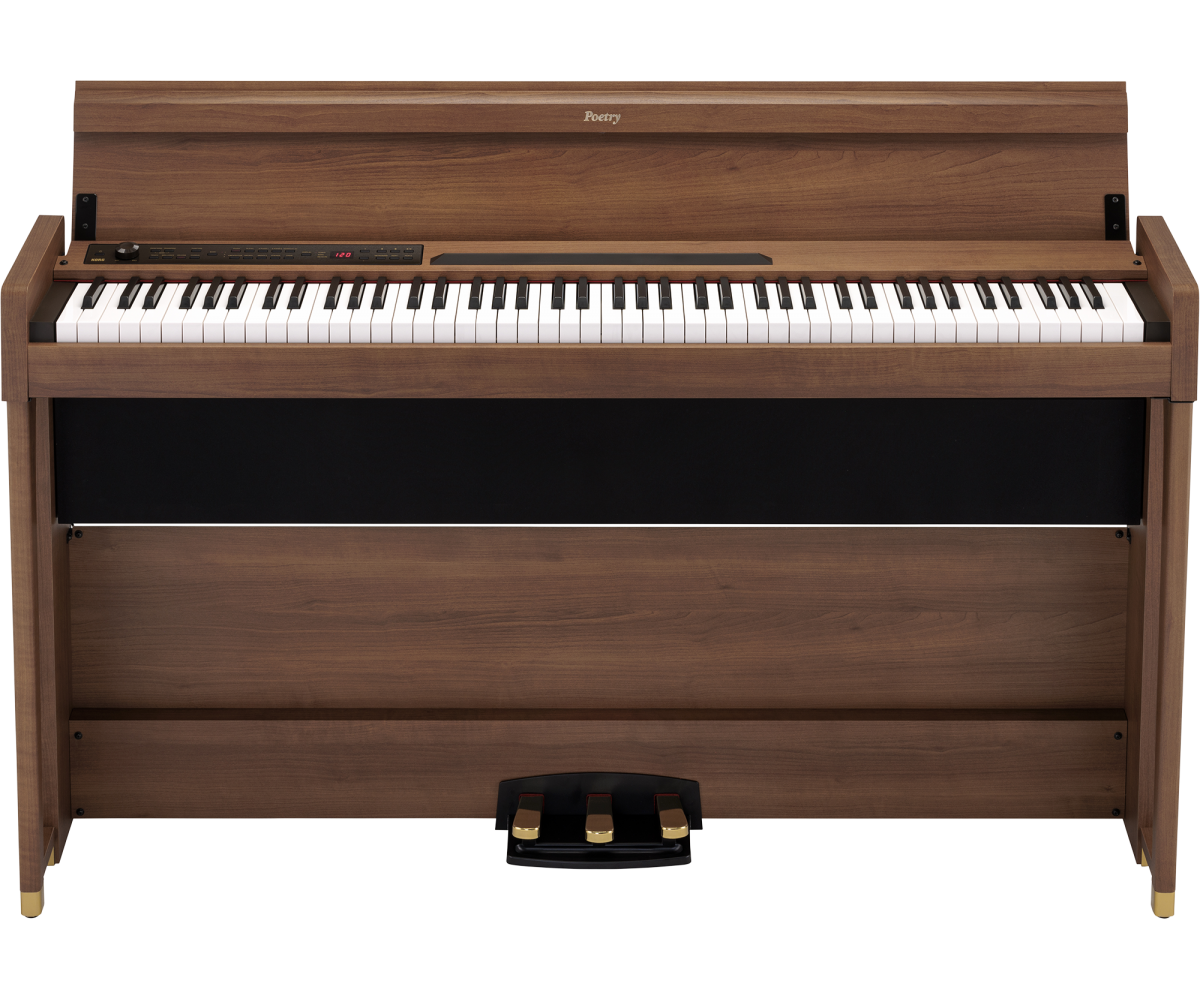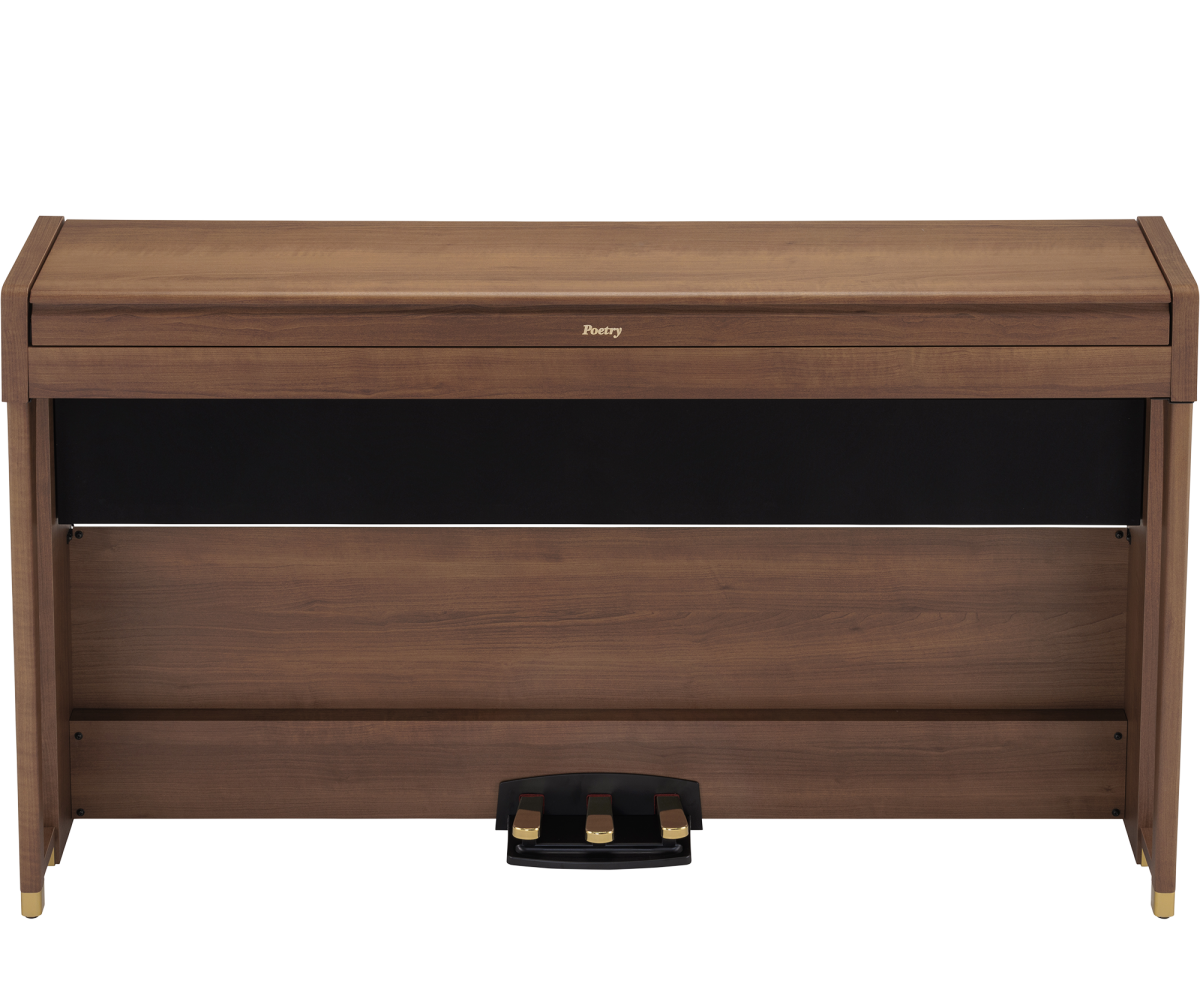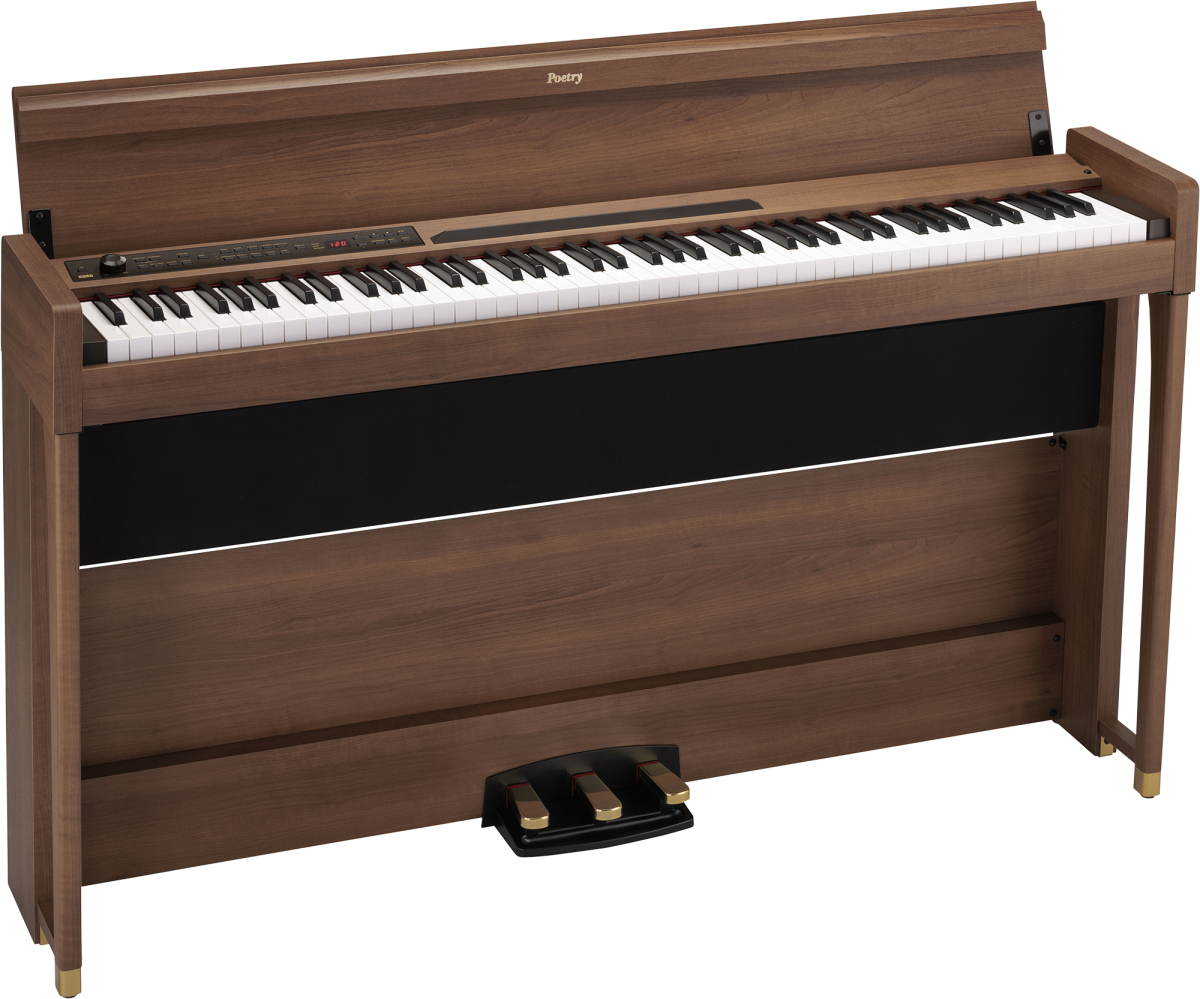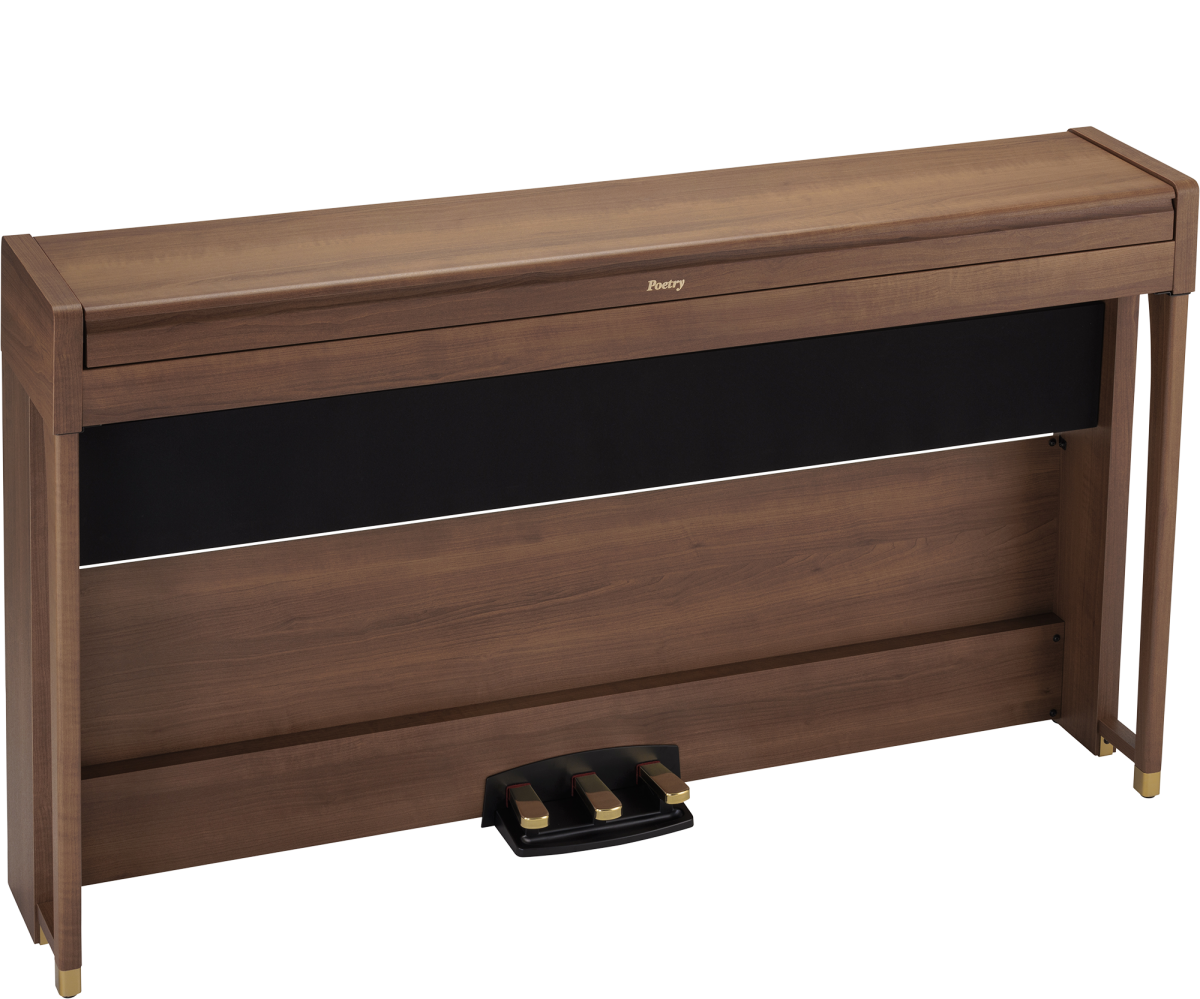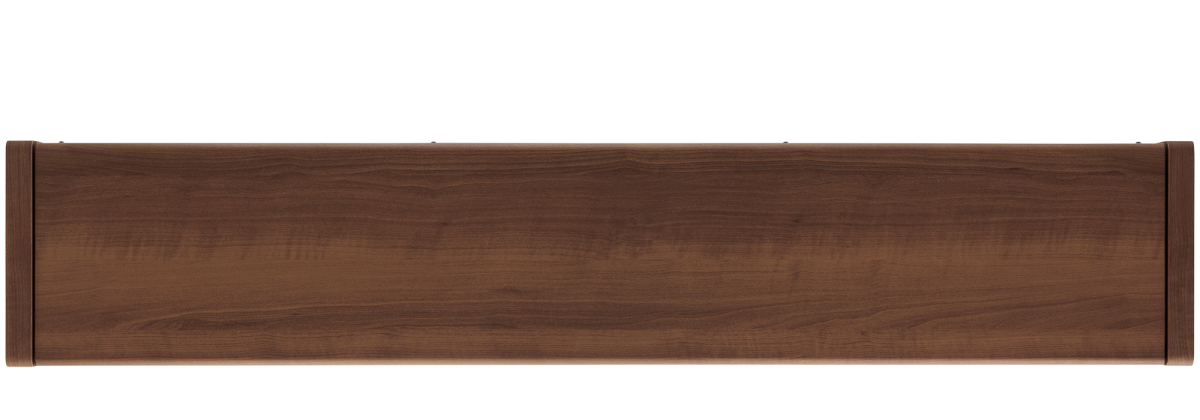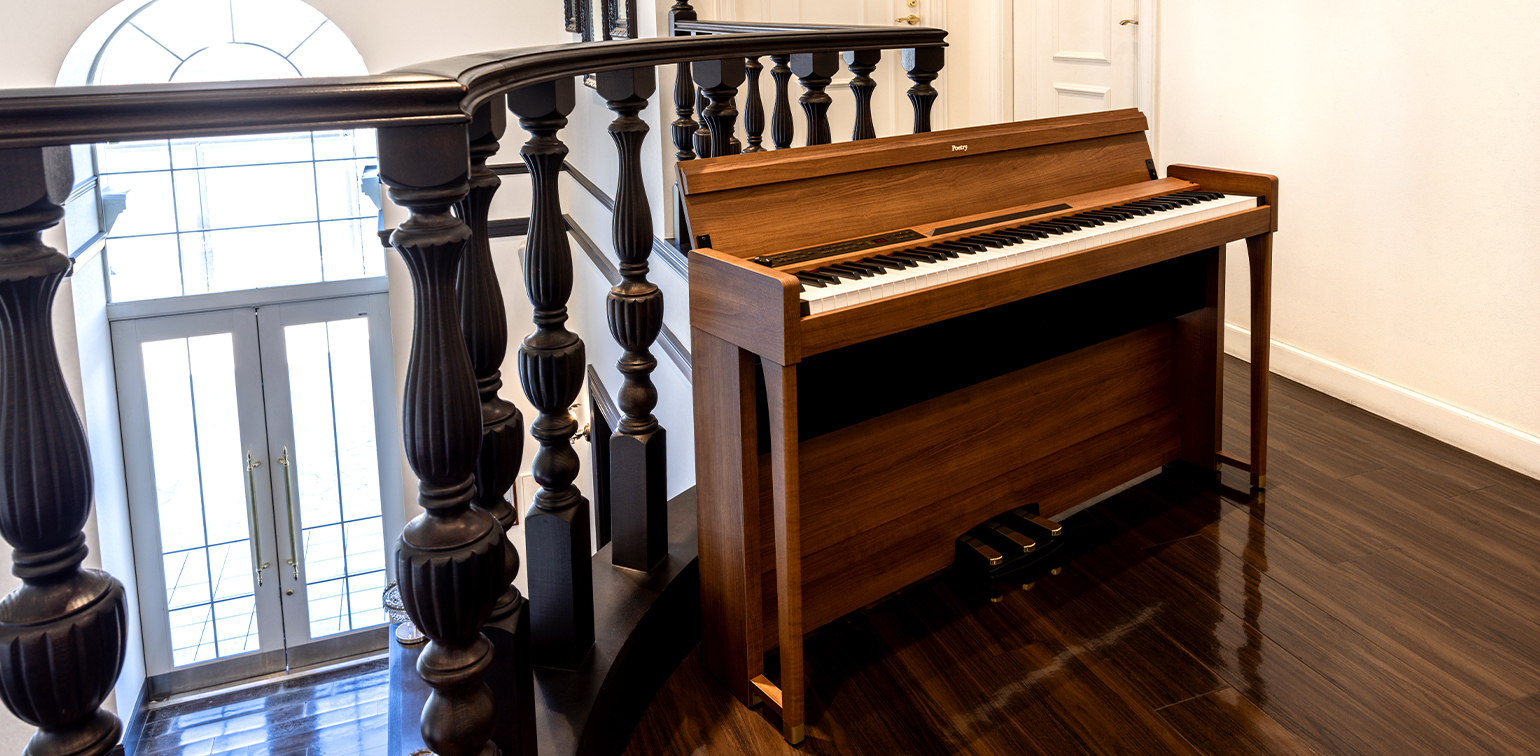

SoundCloud
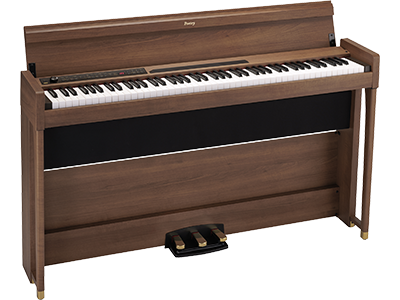
Poetry
DIGITAL PIANO
Ondersteuning
Lees meer
Gerelateerde websites
Gerelateerde producten
De piano voor liefhebbers van Chopin
Maak kennis met de KORG Poetry, een unieke digitale piano met twee verschillende pianoklanken die geassocieerd worden met de legendarische Frédéric Chopin. De eerste piano is de PLEYEL, Chopins keuze van piano, en de tweede is de hedendaagse prachtige Italiaanse piano.
De PLEYEL-toon, afkomstig van de 19e-eeuwse Franse piano, is een zeldzame en begeerde klank, met zeer weinig overgebleven Pleyel-piano's als referentie. De KORG Poetry digitale piano, uitgerust met zorgvuldig opgenomen en geladen hoogwaardige geluidsvoorbeelden van een vintage PLEYEL, brengt de essentie van dat tijdperk naar de hedendaagse wereld. Bovendien biedt het het gemak van een elektronisch instrument, waardoor regelmatig stemmen of onderhoud niet meer nodig is.
- Twee pianoklanken om Chopin tegen te komen
- Omarm elegantie met een stijlvolle kast versierd met prachtige houtnerven
- RH-3-toetsenbord met comfortabele aanslag - Japanse topkwaliteit
- Geschikt voor half ingedrukte dempers, standaard met drie pedalen
- Neem je optreden direct op met de tweevoudige songrecorder
- Functies die uniek zijn voor digitale piano's, zoals een metronoom, layers en partnermodus
- 50 meesterwerken van Chopin ingebouwd
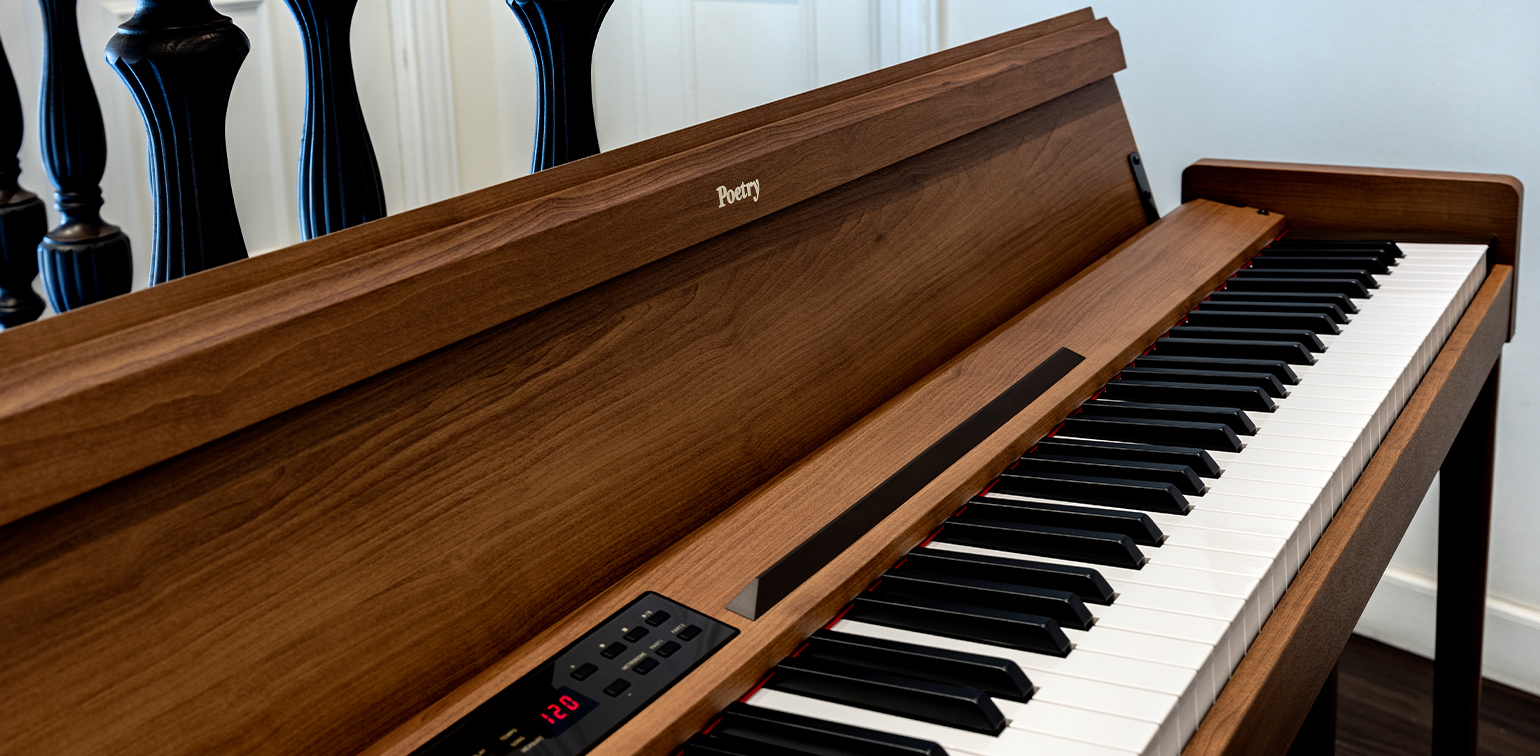
Twee pianoklanken om Chopin tegen te komen
De KORG Poetry is opgedragen aan de legendarische Frédéric Chopin, een gerespecteerd musicus en gevierd klassiek componist en pianist die internationaal geliefd is. Poetry biedt pianoliefhebbers en Chopin-liefhebbers wereldwijd een unieke kans om zijn muziek op een nieuwe en fascinerende manier te ervaren.
Ontdek de symfonie van het erfgoed in Poetry, waarin twee vooraanstaande pianoklanken worden gepresenteerd: de PLEYEL-piano uit 1843, een creatie uit Chopins 33e jaar, en de illustere hedendaagse Italiaanse concertvleugel, die door veel vooraanstaande pianisten wordt gewaardeerd en zijn prestigieuze aanwezigheid elders op het wereldtoneel weerspiegelt.
De PLEYEL3 klank heeft 80 toetsen die een getrouwe weergave zijn van het originele instrument. Door de toonhoogte van deze klank op 430 Hz in te stellen, wordt het klanklandschap gereproduceerd dat in Chopins geest weerklonk, waardoor zijn levendige muzikale wereld natuurgetrouw wordt gereproduceerd.
De hedendaagse Italiaanse piano onthult een adembenemend, transparant en diep expressief geluid. In een hedendaagse vertolking van hetzelfde stuk vangt deze piano de essentie van de verbeelding van een tijdloze componist. Als Chopin hier vandaag zou zijn, zou hij zeker inspiratie vinden in het creëren van zijn soulvolle genie door middel van de klinkende noten van dit moderne meesterwerk.
Omarm elegantie met een stijlvolle kast versierd met prachtige houtnerven
Dompel jezelf onder in de exquise allure van de 'Poetic Brown' houtnerf buitenkant, een prachtig elegant ontwerp geïnspireerd door de zachte sfeer van Chopin. De met goud versierde pedalen en tenen dragen bij aan een luxueuze esthetiek en verhogen de algehele ambiance. Met een slanke diepte van slechts 26 cm (exclusief de anti-kantelbeugel) heeft de Poetry een slank profiel en biedt het extra gemak van een plat oppervlak wanneer het deksel gesloten is.
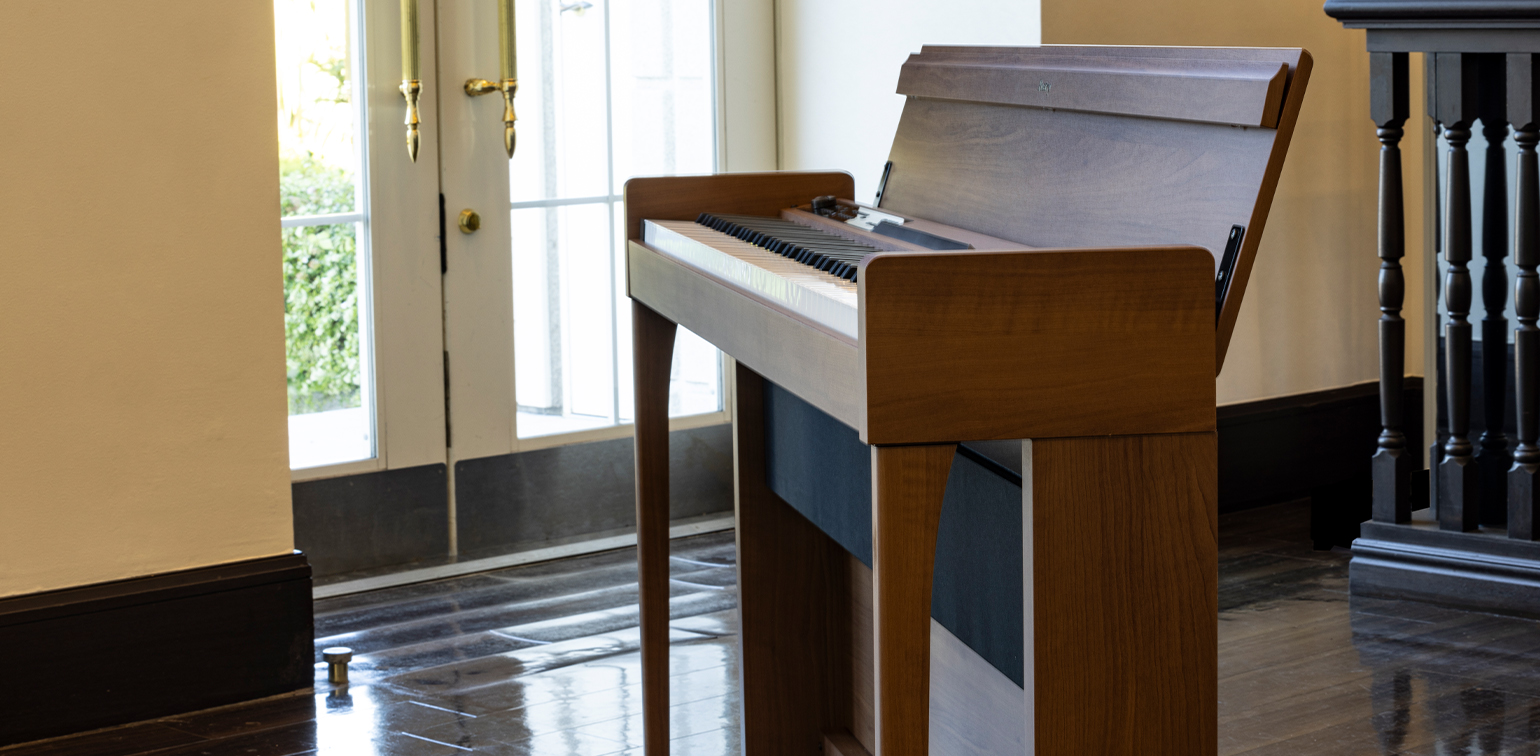
RH-3-toetsenbord met comfortabele aanslag - Japanse topkwaliteit
Ervaar het RH3-toetsenbord (Real Weighted Hammer Action 3), dat zorgvuldig is ontworpen om de genuanceerde aanslag van een vleugel te evenaren. De gewogen toetsen bieden een zwaarder gevoel in het lagere register en een lichtere aanslag in het hogere register, wat de authentieke pianoervaring weerspiegelt. Het RH3-toetsenbord heeft een hoge continue aanslagprestatie en reproduceert de intensiteit van de noten natuurgetrouw, zelfs in snelle passages, zodat de expressieve kracht van de performer onaangetast blijft. Het toetsenbord is bijzonder milieuvriendelijk en maakt het gebruik van lood in de hamers overbodig. De speelbaarheid wordt nog verder verbeterd doordat het toetsenbord is voorzien van toetsbediening, waarmee spelers de productie van noten kunnen aanpassen op vijf niveaus (licht, standaard, zwaar, stabiel en constant) op basis van hun aanrakingskracht, voor een persoonlijke en plezierige speelervaring.
De Poetry zelf wordt ook volledig in Japan geproduceerd, waardoor je verzekerd bent van de hoogst mogelijke productiekwaliteit.
Geschikt voor half indrukken , standaard met drie pedalen
Verhoog je pianospeelervaring met de standaard drie onmisbare pedalen, die de functionaliteit van een akoestische piano weerspiegelen. Schakel naadloos de demper-, soft- en sostenutopedalen in, essentieel voor genuanceerde muzikale expressie. Ga nog gedetailleerder te werk met de optie voor het gebruik van een half pedaal, waarmee je de subtiliteit en rijkdom van je muzikale articulatie verbetert.
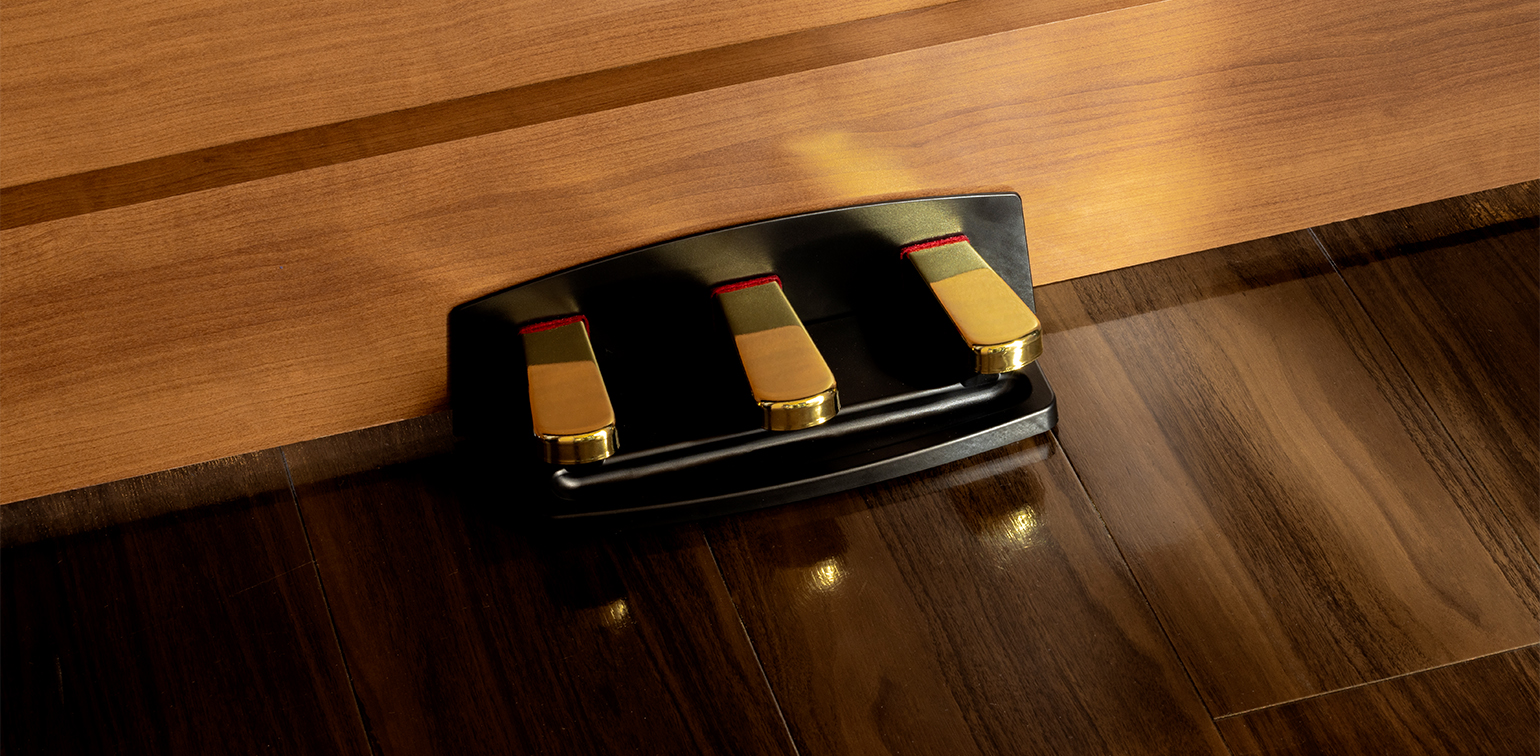
Versterk je muzikale reis met de tweevopudige recorderfunctie, waarmee je je uitvoeringen kunt opnemen, objectief kunt luisteren en je spel kunt verbeteren. Leg de essentie van je muziek vast door elke hand apart op te nemen en zo de benadering van een pianostuk na te bootsen. Je kunt ook je hele uitvoering opnemen naast een opgeslagen nummer. Neem de controle over je oefening met de mogelijkheid om het tempo van opgenomen gebruikersnummers aan te passen tijdens het afspelen, waardoor je een dynamisch hulpmiddel hebt voor verbetering en muzikale verkenning.
Verbeter je oefensessies met de handige metronoom, die je eenvoudig met één druk op de knop in- en uitschakelt - ideaal voor lessen en het verfijnen van je timing. Verken de meeslepende 'Layer Mode', waarin je moeiteloos twee tonen kunt combineren door tegelijkertijd op de corresponderende knoppen te drukken, zodat je snaren, vibrafoon en andere instrumenten harmonieus kunt laten samensmelten met de piano. Speel samen met twee spelers in de 'Partner Mode', die is ontworpen om hetzelfde register te delen door het klavier te verdelen in een linker- en rechterkant. Of het nu gaat om docenten en studenten of ouders en kinderen, deze modus bevordert gedeelde muzikale ervaringen en plezierige lessen.
Bluetooth audio-ondersteuning
Sluit een Bluetooth-apparaat zoals een smartphone aan op de Poetry en speel piano samen met je opgeslagen muziek of andere audio. Als je niet op de piano speelt, kun je de Poetry gebruiken als een krachtig Bluetooth-luidsprekersysteem.
50 meesterwerken van Chopin ingebouwd
Dompel jezelf onder in de wereld van Chopin met 50 meesterwerken die zorgvuldig zijn samengesteld op de piano zelf. Ontdek en vergelijk de betoverende tonen van de Italiaanse piano en de PLEYEL-toon, snel en eenvoudig. Laat prachtige achtergrondmuziek spelen door Poetry! Geniet bovendien van het speelplezier met behulp van de 23 meegeleverde zorgvuldig geselecteerde pianopartituren, zodat je kunt genieten van zowel het luisteren naar als het spelen van prachtige muziek op het moment dat je je eigen Poetry aanschaft. Om je muzikale zintuigen nog meer te boeien, kun je genieten van 10 extra toon-demosongs die de diverse mogelijkheden van het instrument laten horen.
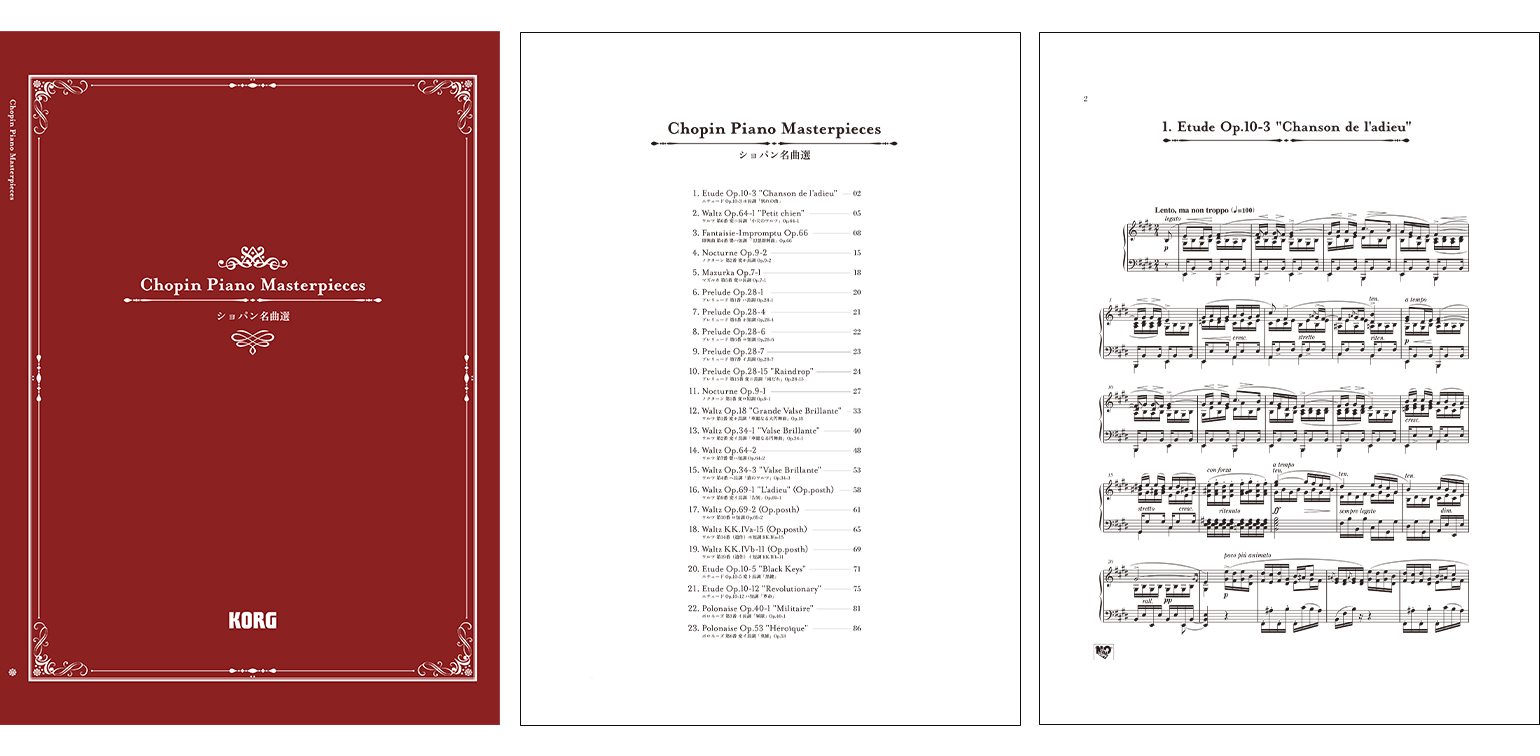
Over Chopin
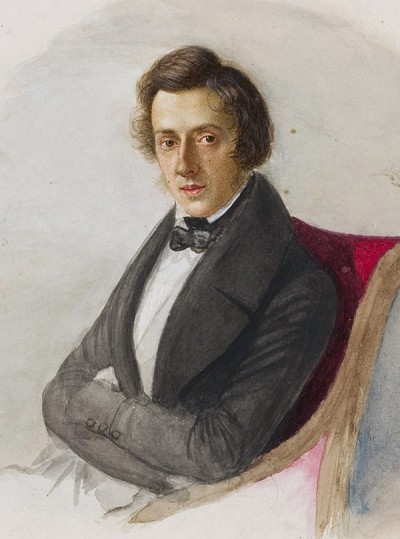
Nationaal Museum in Warsaw, Public domain, via Wikimedia Commons
Frédéric François Chopin
Chopin and Pleyel Piano
“Als ik me niet in topvorm voel, speel ik het liefst op een Érard, vanwege zijn heldere en kant-en-klare toon. Maar als ik me alert voel, klaar om mijn vingers te laten werken zonder vermoeidheid, dan geef ik de voorkeur aan een Pleyel”. Deze uitspraak van Chopin is beroemd geworden. In het Frankrijk van 1830, toen Chopin in Parijs ging wonen, waren er twee grote pianomakers, Érard en Pleyel. Terwijl de Érard piano's werden gekenmerkt door hun prachtige klank, rijke volume en makkelijk te bespelen functionaliteit, waren de Pleyel piano's zacht en delicaat, gevoelig voor zelfs de kleinste verandering in aanraking, en ze werden gezegd dat het instrumenten waren die veel uitvoerend lef vergden. De variëteit aan klanken die de Pleyel produceerde, afkomstig van zijn delicate touch control, was essentieel voor de werken van Chopin en het was zijn favoriete muzikale partner.
A commentator: Aki Fujii
Over de PLEYEL piano

Over de 1843 PLEYEL
De PLEYEL piano uit 1843 in de Poetry is een opmerkelijk exemplaar dat werd gemaakt tijdens Chopins 33e jaar. De piano is in originele staat vanuit Frankrijk naar Japan getransporteerd en zorgvuldig gerestaureerd. Alleen courante onderdelen die vervangen moesten worden, werden ter plaatse gekocht, terwijl niet-courante onderdelen speciaal werden besteld in Frankrijk. Het resultaat is een getrouwe restauratie, die de piano in een staat houdt die sterk lijkt op zijn oorspronkelijke staat uit 1843.
Features van de PLEYEL
Poetry bijpassende pianokruk, PC-400PB.
De PC-400PB pianokruk heeft een kleur en houtnerftint die overeenkomt met de “Poetic Brown” kleur van de Poetry digitale piano.
